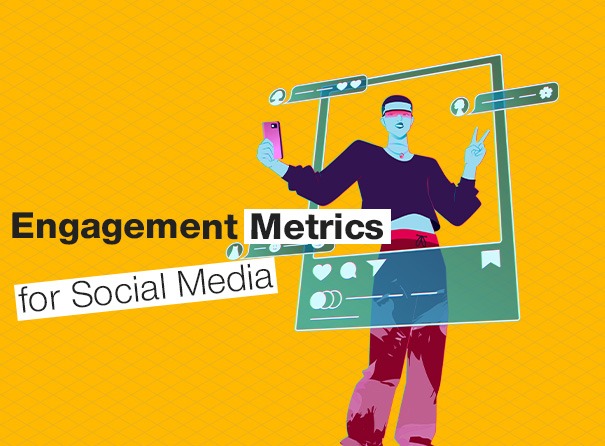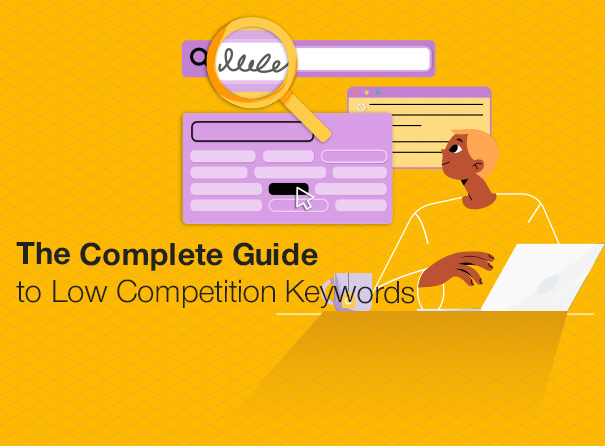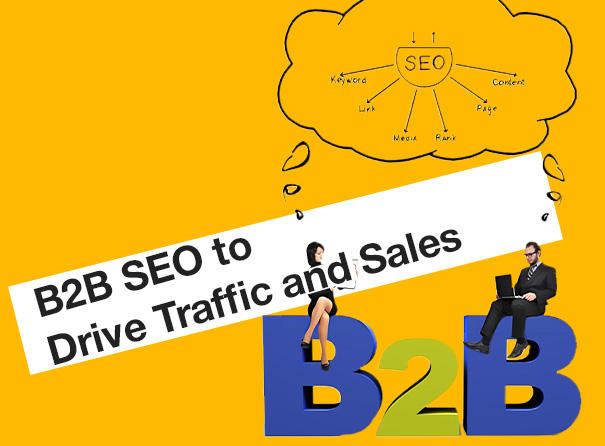TL;DR: - Measuring social media engagement metrics is crucial to understanding how your audience truly interacts with your brand. Focus beyond vanity metrics like followers; track likes, comments, shares, saves, DMs, CTR, conversions, and retention to gain actionable insights. Use analytics tools, set clear goals, and optimize content, timing, and community engagement to boost performance and ROI.
Each post, reel, and tweet you put out tells a story — but are you hearing what your audience is telling you in return?
Here’s the thing: you can have 50,000 followers and still be yelling into the void. Tracking engagement metrics for social media is no longer a creative afterthought; it's the cornerstone of every successful digital strategy. Beyond vanity metrics such as follower numbers, genuine engagement shows to what extent your audience resonates with your brand. If you're prepared to leave guesswork behind, working with a social media optimization agency like Inqnest could be your next best move yet.
Why It's Important to Measure Social Media Engagement Metrics
Let's face it: publishing content and waiting for the best is no strategy. It's a risk.
Monitoring social media performance metrics is checking your brand's digital pulse. Engagement metrics show you who is actually interested in your brand — not how many views happened to land on your post, but how many stopped, reacted, commented, or shared it with their network.
- Engagement = loyalty- High engagement rates tell you that your audience isn't just hearing about you; they trust you, care about you, and want to be a part of your story.
- Content quality check- If your engagement is plummeting, your content is not working. Metrics provide the feedback loop you require to make tone, timing, format, and messaging adjustments.
- Brand perception insights- Comments and shares tell you what people actually think of your brand.
And let's have a reality check: there's a massive difference between vanity vs engagement metrics. Follower numbers sound great on paper, but engagement rate will let you know if people actually care.
Key Engagement Metrics to Track and Measure
All metrics aren't equal. Some reveal who viewed your stuff. Others reveal who cared enough to take action. Let's sort out what really matters.
Core Engagement Metrics
- Engagement rate is your north star metric — the percentage of your audience that's actually engaging with your content. To calculate it, total engagements are divided by reach or impressions, and then multiplied by 100. Industry standards will differ, but anything over 3% is good.
- Likes and reactions are the simplest type of validation. They indicate approval, but don't confuse them with deep connection. They're the appetizer, not the main course.
- Comments are a measurement of conversation depth. 500 likes and 2 comments? Yawn. 100 likes and 50 well-thought-out comments? We're cooking now. Comments indicate your audience is engaged enough to take their time and comment.
- Shares and retweets are the ultimate compliment. When someone retweets or shares what you've posted, they're backing up their own reputation to make your voice heard larger. That's advocacy. That's trust.
- Bookmarks and saves are underappreciated goldmines. They say your content is long-term valuable — people want to return to it later. This is particularly strong for education or how-to content.
- Direct messages say there's interest on a deeper level. Whether it's a question, collaboration request, or simply a "this resonated with me" comment, DMs reflect relationship-building potential.
Awareness and Reach Metrics
- Reach measures unique views per post. It's your potential audience for that particular content.
- Impressions measure total views of content, repeated views included. Great impressions with poor engagement? Your content is viewed but not moving people to do something.
- Follower growth rate is momentum. It's not about reaching 10K followers; it's about steady, organic growth that represents real interest.
- Brand mentions assist with reputation tracking. Monitoring tagged and untagged mentions provides you with a more complete view of how individuals converse about you when you are not present.
Conversion and ROI Metrics
This is where social media analytics intersect with business outcomes.
- Click-through rate (CTR) measures how many people clicked your link compared to how many viewed it. Low CTR? Your call-to-action needs tweaking.
- Conversion rate measures how many clicks resulted in actual desired actions — sign-ups, sales, downloads. This is the metric your CFO will care about.
- Return on ad spend (ROAS) and cost per click (CPC) determine whether your paid social campaigns are an expense worth making. No hype here — only cold, hard ROI.
Metrics for Customer Retention
Most brands are fixated on acquisition. Smart brands are fixated on retention. Here's the reason engagement metrics are your loyalty secret weapon.
Engagement as Retention Insight
Regular interaction is linked to strong brand loyalty. If a person comments on several posts, saves your content frequently, or interacts with your stories on a weekly basis, they're showing allegiance.
Measure repeat interactions per user over time. Measure customer lifetime engagement value — not only how much they spend, but how much they advocate. Use sentiment analysis to get a sense of the tone of repeat followers' comments. And measure post-purchase engagement rate to determine whether customers stick around after purchasing or ghost you.
These retention findings help your content strategy and transform your customers into vocal brand champions. Because retaining a customer is infinitely less expensive than acquiring a new one.
How to Measure and Analyze Your Social Media Metrics
Monitoring metrics without strategy constitutes data hoarding. Here is how to track social media performance effectively.
- Establish Clear Goals- Base your social media KPIs on brand goals. Do you want awareness, lead generation, or direct conversions? Your objectives determine what metrics are important.
- Step 2: Employ the Right Analytics Tools. Built-in tools such as Meta Business Suite and LinkedIn Analytics take care of the essentials. For cross-platform analysis and more detailed analysis, tools such as Sprout Social, Hootsuite, or Brandwatch tie everything together perfectly.
- Analyze Trends & Context. Which formats are most engaging? Do videos perform better than carousels? Do polls collect more comments than static pics? Compare your metrics against previous performance and, where possible, against the competition.
- Create Insightful Reports. Reporting weekly or monthly makes growth visible, justifies spend, and hones creative direction. Don't merely spit numbers into a spreadsheet — share the story behind the figures.
How to Boost Your Social Media Performance
Knowing the metrics is step one. Improving them? That's when the real work starts.
- Create Engaging, High-Quality Content: Experiment with videos, carousels, and polls. Keep visuals consistent with your brand story. Quality always beats quantity.
- Engage Proactively: Reply to comments. Use polls and Q&As. Foster community conversations. Social media is a two-way street — act like it.
- Use Hashtags and Timing Carefully: Strategic hashtags increase reach, but timing matters. Read our guide to the best time to post on social media to maximize visibility.
- Encourage User-Generated Content: Host challenges or testimonial promotions that humanize your brand and make customers co-creators.
- Collaborate with Influencers: The right influencer partnership amplifies credibility, expands reach, and establishes trust with new audiences more quickly than any ad ever could.
Conclusion: Measuring What Matters
Here's the bottom line: you can't improve what you don't measure. But measuring the right things differentiates brands that grow from brands that stagnate.
At Inqnest, we believe a data-driven social media optimization strategy combines creative storytelling and measurable engagement performance. It's not about pursuing likes or artificially boosting follower numbers. It's about establishing genuine connections, driving loyalty, and converting engagement into conversions, community, and long-term growth.
Ready to convert likes to long-term loyalty? See how Inqnest's Social Media Optimization service assists you in converting engagement metrics to growth.
Frequently Asked Questions
1. What are the key social media engagement metrics of 2025?
The most vital ones are engagement rate, comments, shares, saves, and conversion rate. These break beyond mere surface-level vanity metrics and capture true audience connection and content efficiency.
2. How often should I monitor my social media engagement metrics?
Measure metrics weekly for real-time tweaking and monthly for analysis of trends. Large campaigns warrant a daily checkup for launch periods.
3. How are vanity metrics different from engagement metrics?
Vanity metrics such as follower count may appear impressive but fail to express actual audience interest. Engagement metrics quantify active participation — comments, shares, saves, which translate into real connection and content value.
4. How do I increase my social media engagement rate?
Develop audience-centric content that is interactive in nature via polls, Q&As, and videos. Post regularly, utilize hashtagged strategies, and interact with followers via comments and messages to establish trust with the community.
5. What are the most effective tools for measuring social media engagement metrics?
Native analytics such as Meta Business Suite, X Analytics, and LinkedIn Analytics are appropriate for individual platforms. To see cross-platform insights, applications such as Sprout Social, Hootsuite, and Brandwatch can deliver in-depth performance reports and trend analyses.











.png)












.png)
.png)
.png)

.png)
